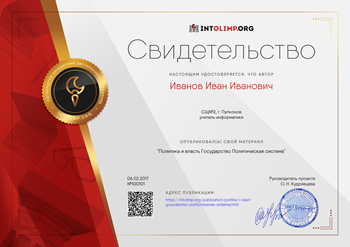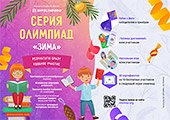Mobile Phones
Step One: pre-reading
As a preparation for reading, T asks the Ss to work in pairs and discuss together some of the advantages and disadvantages of mobile phone. T provides creative tasks that students can do at their own level, T moves around the class offering help where necessary. For weaker students (Mary, Natasha and Lera) T can offer some ideas:
Keep in touch with….-связаться с кем-либо
You can listen to music…..- вы можете слушать музыку
You don't miss important calls….- вы не пропустите важные звонки
You can surf the Internet – вы можете войти в Интернет
Mobile phone can damage for…- мобильный телефон может нанести вред….
Mobile phone can limit real communication – ограничиваетреальноеобщение
It can be expensive – Телефон может быть дорогим
When they have finished, asks some students to write advantages and others disadvantages on the board.
For example:
| Advantages of Mobile Phones: | Disadvantages of Mobile Phones: |
| Keep in touch with friends and family You don't miss important calls If you are lost, you can call for directions. If you are in an accident, you can call the police or ambulance - and if the phone has a camera, you can take pictures of the accident. You can listen to music, text, play games when you're bored. Most mobile phones have a calculator and a phone book. Phones have internet connection They have cameras You can check your emails
| Mobile phones can be expensive They can damage your health Sometimes the reception is poor in some areas, limiting your connectivity (you can't talk underground or on planes). People use the phone while they are driving, and this can cause problems. They can limit your face to face time with friends and family Can be hard for older people to use. Because of their smaller size, they can be easy to lose. |
T divides the students into groups according to ability (1 group – the weaker students (Mary, Natasha, Lera, Anton)( 2 group – the stronger students (Polina, Kate, Ann, Vadim, Sergey). T gives each group of students the word lists that previously created. Ss work within their groups and T asks them to discuss the meaning and use of the words.For the weaker students T should write the meaning and students try to understand and translate these words. Ss may use a dictionary or ask T for help. When they have finished, clarify the vocabulary together as a class.
Mobile Phones Vocabulary for weaker students
| Word | Meaning |
| conducted verb | Carried out with control |
| definitive adj | complete; well understood |
| device noun | a thing that people use for a specific purpose |
| err on the side of caution idiom | take the necessary precaution due to a possible risk |
| funded verb | paid or partially paid for |
| Gamingconsoles noun | electronic devices that allow people to play video games |
| hazardous adjective | dangerous; could cause injury or health problems |
| illustrate verb | show |
| logical adj | Makes sense |
| longtermexposure noun | the use or close proximity to something over a long period of time |
| mobilephone noun | a wireless phone that can be carried with you out of the home and office |
| potential noun | Good possibility |
| radiation noun | a type of energy that is transmitted as waves or rays |
| tissue noun | group of cells in the body that work together |
| tobacco noun | dried leaves found in cigarettes |
| Word | Meaning |
| conducted verb |
|
| definitive adj |
|
| device noun |
|
| err on the side of caution idiom |
|
| funded verb |
|
| Gamingconsoles noun |
|
| hazardous adjective |
|
| illustrate verb |
|
| logical adj |
|
| longtermexposure noun |
|
| mobilephone noun |
|
| potential noun |
|
| radiation noun |
|
| tissue noun |
|
| tobacco noun |
|
Step Two: Reading (I tried to use Jigsaw technology)
Put the students into three mixed ability groups, and distribute copies of the reading strips.
Group students with the same letter text together so they can preview and read the text together. That is, put students with paragraph A together, students with paragraph B together, students with paragraph C together
A Sergey A Polina A Natasha B Vadim B Ann B Anton C Kate C Lera C Mary
Students now read their text, T allows students to consult together as they work. They should also answer the comprehension questions.
Mobile Phones Text
A
Is talking on a mobile phone hazardous to your health? It is difficult to know for sure. Some research suggests that heavy users of mobile phones are at a greater risk of developing brain tumours. However, many other studies suggest there are no links between cancer and mobile phone use.
The main problem with the current research is that mobile phones have only been popular since the 1990s. As a result, it is impossible to study the long term exposure of mobile phone use. This concerns many health professionals who point out that many cancers take at least ten years to develop. Another concern about these studies is that many have been funded by those who benefit financially from the mobile phone industry.
Reading comprehension
1. According to the text, do mobile phones lead to brain tumours?
2. The text mentions the 1990s because this was when …?
B Many cancers take ten years to develop.
Over three billion people use mobile phones on a daily basis, and many talk for more than an hour a day. Mobile phone antennas are similar to microwave ovens. While both rely on electromagnetic radiation, the radio waves in mobile phones are lower in radio frequency (RF). Microwave ovens have enough RF to cook food and are therefore known to be dangerous to human tissues. However, the concern is that the lower frequency radio waves that mobile phones rely on may also be dangerous. It seems logical that holding a heat source near your brain for a long period of time is a potential health hazard.
Mobile phones get hot when they are used for a long period of time.
Some researchers believe that other types of wireless technology may also be dangerous to human health, including laptops, cordless phones, and gaming consoles. Organizations that are concerned about the effects of Electromagnetic Radiation (EMR) suggest replacing all cordless devices with wired ones. They say that many cordless phones emit dangerous levels of EMR even when they are not in use. They even suggest keeping electronic devices, such as computers and alarm clocks out of bedrooms, or at least six feet from your pillow.
Reading comprehension
3. Why does the article mention microwave ovens?
4. Which of the following is NOT mentioned in the article?
C Other wireless technology may also be hazardous to our health.
A growing number of health professionals worldwide are recommending that mobile phone users err on the side of caution until more definitive studies can be conducted. They recommend that adults use head sets or speaker phones and that children and teens, whose brain tissue are still developing, use mobile phones only for emergencies. Concerned medical experts use the example of tobacco to illustrate the potential risks. Many years ago, people smoked freely and were not concerned about the effects of cigarettes on their health. Today, people know that cigarettes cause lung cancer, though it is still unknown exactly how or why. Some doctors fear that the same thing will happen with devices such as mobile phones.
Reading comprehension
5.How is mobile phone used compared toa tobacco use in this article?
Teacher prepared the chart, that included all three paragraphs and would be appropriate for the content. T distributes copies of the chart to the students.
|
| Paragraph A | Paragraph B | Paragraph C |
| Main ideas |
|
|
|
| Details |
|
|
|
Students should fill in the main idea and details in the column of their chart that corresponds to their paragraph (i.e. students with paragraph A fill in column A). The Ss should be responsible for both vocabulary and content, each member of the group understands their parts of the material and that they will be able to teach it to others in their group.
Groups should come to a consensus as to the main idea and details of their paragraph.
Next regroup the class into three new groups so that each new group has a student who has read each paragraph. So, Group 1 should have A, B and C and so forth.
A B C A B C A B C
Students should elicit information from each other and share the main idea and details from each of the paragraphs. Each member of the group now teaches the rest of the group about the section they just read about.They fill out the table as each group member shares the main ideas and details of their paragraph. When groups have completed their tables, they come back together as a class to recap and share information.
Step Three: Follow up
T groups weaker and stronger students separated from each other and gives them different tasks.
So the stronger and quicker students work with more complicated tasks, whereas the weaker students deal with a simpler task.
For the weaker student (Mary, Natasha, Lera)
Vocabulary quiz with multiple choices:
Началоформы
1. Another word for dangerous is
A logical B hazardous C potential D definitive
2. The device used for playing video games is a gaming
A mobile B radiator C console D exposure
3. The term "funded" means
A helped pay for B underpaid C on sale D expensive
4. Microwaves are a type of
A tissue B radiation C mobile D mobile phone
5. A synonym for "to show" is
A to conduct B to illustrate C to devise D to fund
For the stronger and intermediate students (Vadim, Polina, Kate, Ann, Sergey, Anton)
Vocabulary quiz, filling missing words:
Another word for dangerous is….
The device used for playing video games is a gaming ….
Theterm "funded" means…
Microwaves are a type of….
A synonym for "to show" is……







